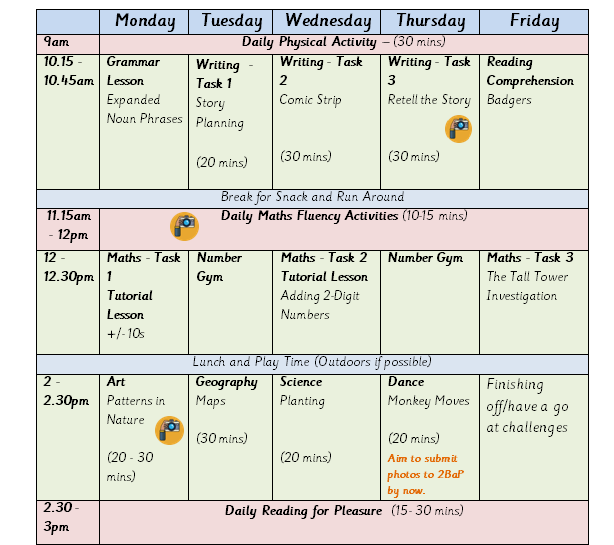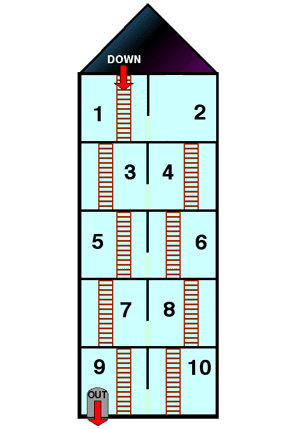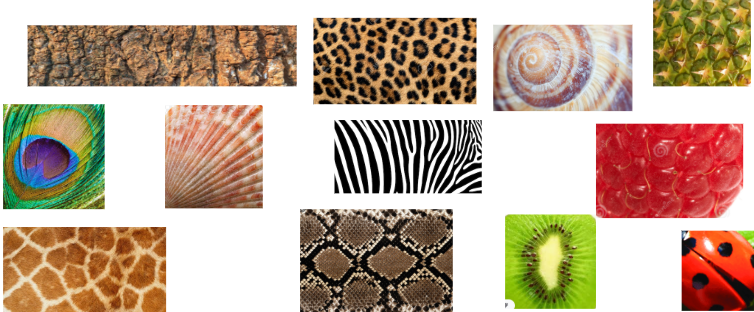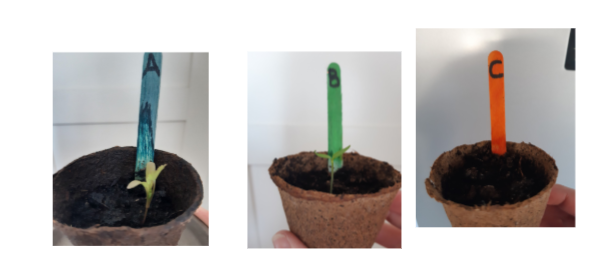Welcome to another week of Year 2 home learning. Unbelievably, it’s the last week of Term 5. Well done Parents for surviving a whole term of home school! We absolutely loved seeing all your work from Week 4, especially the disgusting sandwich pictures! They looked delightfully foul! Remember that, whilst we love receiving work, there is absolutely no pressure to send in everything you are doing. Prioritise submitting the 3 ‘photo opportunities’ and remember health and well being are the top priorities. If you find you are struggling, ‘little and often’ is a good mantra to have and please don’t feel guilty. These are testing times for us all!
For Week 5, we are carrying on with our gooey, sloppy, squelchy key text ‘The Disgusting Sandwich’, number work in maths, and tasks for dance, science, art and geography. Access to all resources is available here and links to specific resources will be available throughout the plans. Here is the suggested timetable (available to print in resources folder):

Reading
Learning objective: In books you can read fluently, answer questions and make some inferences.
This week we would like you to focus on fiction. Carry on reading the books you are enjoying at home or pick some new online fiction books to read on ‘Bug Club’. Then have a go at one of these independent challenges:
- Pick out 10 words that you feel are powerful words and that you could use in your own writing;
- Think of 5 questions you would like to ask one of the characters. Then write their answers as if you were that character;
- Before you finish the book, write down your predictions for the ending. After you finish, look back and check the accuracy of your prediction.
We know from our Disgusting Sandwich text that badgers must like slugs but what else can we find out about badgers? Have a go at this Badger comprehension. Choose the level of challenge to suit you.
Grammar
This year we have been working closely with The English Hub at St Peter’s Primary in Portishead. They have produced some fantastic lessons to help Year 2 children refresh their understanding of some key grammar concepts. This week, the lesson is about expanded noun phrases. You can access it here.
Writing
This week we are carrying on with our key text ‘The Disgusting Sandwich’. You can hear Mrs Larner read it here.
Here is a word mat to support children’s vocabularly and spelling.
Task 1: Planning
Learning Objective: To change some features when writing your own version of a familiar story, imitating the style of the original.
This week we are going to have a go at writing our own version of The Disgusting Sandwich with some slight changes. We are going to call our version The Revolting Cake! Click here for an example.
Before we can write our stories we need to have a clear plan to help us. Have a look at the planning sheet and think about the changes you would like to make to the story. You could think about setting your story somewhere else, a jungle, the seaside or even space! How would that change the characters we encounter and what happens to the cake?
Task 2: Planning
Learning Objective: To change some features when writing your own version of a familiar story, imitating the style of the original.
Now you’ve had a chance to think about the changes you are going to make it is time to map out your story. Today we are going to create a comic strip drawing 8 key points in the story. Here is a template or you can work straight in your book.
Task 3: Writing and Editing
Learning Objective: To change some features when writing your own version of a familiar story, imitating the style of the original.
Using your comic strip from yesterday to help you remember the order of the key events, write your story ‘The Revolting Cake’. Choose the level of challenge for your focus:
- Write clear, coherent sentences with capital letters and full stops.
- Remember capital letters, full stops and commas in between adjectives.
- All of the above plus use words with suffixes (e.g. –ment, –ness, –ful, –less, –ly) in your story.
Extra Challenge: Proof read your story once you have finished it and edit, not only making corrections but also revising and improving where appropriate.
Maths
Lessons 1 and 2 will use instructions from a video tutorial. Please be aware that you will need to click back on the Summer Term – Week 4 (w/c/ 11th May) tab, to find the correct tutorials. Before commencing the video ensure that your child has everything they need, including:
- the correct ‘Flashback4’ sheet (to be completed before the tutorial starts);
- the question worksheet (the answer sheet is also available for marking);
- a pencil;
- a workbook or piece of paper to work on.
The tutorial will ask your child to pause the video at certain points. Please ensure that they know how to do this if you are not able to sit with them. The question sheet is to be completed after the tutorial.
Daily Fluency:
Available here.
For tasks 1 and 2, the Flashback 4 sheet should be completed before the tutorial. Three additional fluency tasks are available in the shared drive. This week, these will focus on solving and comparing number sentences using <, > and =. If you feel your child would benefit from more support, try the supporting resources.
We would like to see one of the fluency tasks (we don’t mind which) to help us assess areas needing more practise. Please allow your child to work independently and to use maths pictures for working out if necessary.
Task 1 – Adding and Subtracting 10s
Learning Objective: Add and subtract any 2 two-digit numbers using an efficient strategy, explaining their method verbally, in pictures or using apparatus.
Set up the video tutorial. Remember to click on the Summer Term – Week 4 (w/c/ 11th May) tab and scroll to Lesson 1 – Adding and Subtracting 10s.
You will need the Flashback4 Fluency Sheet and the worksheet. Please go through the answers with your child after they have completed the tutorial. Today’s tutorial is longer and a little more complex than some of the previous ones; your child may need more guidance than usual.
Support: If your child has difficulty following the tutorial, please complete Lesson 3 – Related Facts (Tutorial under the Summer Term – Week 3) instead. The worksheet is available here.
Extension: Try the ‘Diving into Mastery’ challenges. There are three levels of challenge here; try the simplest level and move on only if the level of challenge is appropriate.
Task 2 – Adding 2-Digit Numbers
Learning Objective: Add and subtract any 2 two-digit numbers using an efficient strategy, explaining their method verbally, in pictures or using apparatus.
Set up the video tutorial. Remember to click on the Summer Term – Week 4 (w/c/ 11th May) tab and scroll to lesson 2 – Add 2-Digit Numbers.
You will need the Flashback4 Fluency Sheet and the worksheet. Please go through the answers with your child after they have completed the tutorial.
Support: If your child has difficulty following the tutorial, please complete Lesson 4 – 2-Digit Add and Subtract Ones (Tutorial under the Summer Term – Week 3) instead. The worksheet is available here.
Extension: Try the ‘Diving into Mastery’ challenges. There are three levels of challenge here; try the simplest level and move on only if the level of challenge is appropriate.
Task 3: The Tall Tower
Learning Objective: Use reasoning about numbers and relationships to solve problems.

View the activity here.
This problem allows children to practise addition and subtraction, and compare numbers, in an interesting and challenging context. It also provides an opportunity to encourage learners to reason mathematically as they justify their solutions.
Use the ways into the problem (from fictional children) to help capture your child’s curiosity. By focusing on different approaches to the task, learners’ attention is on the mathematical journey rather than just the answer. A recording sheet is available through the activity link if you would like to use it.
Extension Challenge: Answer the additional questions available on the activity sheet. Children may also have a go at creating their own towers, some tower templates are available through the activity link.
PE
Fitness: Please continue to start your day with Joe Wicks or something similar. You could also try Yoga which is great for improving balance, control and strength. Cosmic Kids Yoga on Youtube is fun, you are aiming for around 20 mins to 30 mins with a warm up and cool down.
Skills: Dance
Learning Objective: Create and perform a dance using simple movement patterns.
Last week we explored moving like different animals. This week you are going to create a dance in the style of a monkey to Disney’s ‘I Wanna be like You’. You can watch this video for some monkey moves inspiration or just get started!
There is a presentation here if you would like to use it. Apart from starting on the floor and ending on the balanced pose the order of the rest of the movements doesn’t matter; feel free to vary.
Activity: Create your own dance routine of @ 1 min – 1 min 30 secs connecting at least 5 moves with freestyle monkey moves, you will need at least 3.
The 5 moves are:
- One movement on the floor to start the dance.
- One jump (take off on two feet, land on two feet e.g. tuck jump or star jump)
- One leap (take off on one foot and land on the other)
- One turn or spin
- Finish with a balanced pose on one leg, hold for 5 seconds
Extra challenge: Add a turn to your jump.
Art
Learning Objective: Recognise patterns in nature and use colour, shape, texture and space to create a pattern using materials found in nature.

Discuss what the children understand by a pattern. They may find it easier to show you an example than describe it. It is something that repeats in a way you can predict. What colour shape would come next?
Look at Patterns in Nature to guess where these patterns are found in nature. Discuss the patterns you have seen, is it stripes, shapes or a colour that is repeated to make the pattern?
Go into the garden/park and collect materials to create a pattern. It could be leaves, petals, stones, grass, sticks – whatever you can find. No insects or animals and ask permission before you pick something! Think about colours and shapes to create your design and make sure you collect several of the same thing not just one.
Activity: Find a clear space or use a blank sheet of paper as a background and arrange your collection to make a pattern. There are examples here.
Geography
Learning Objective: Know the difference between human and natural features on a map and combine them to create a map.

Last week we created a map for our imaginary town and used symbols and a key to mark where landmarks were. All the things we put on our map like houses, a church and a park are made by man. These are called human features but maps also show us natural features such as rivers, the beach, woodland, mountains. Go through the PowerPoint: Maps Natural and Human Features.
Activity – draw and colour a map of an island including 3 human features and 3 natural features represented by symbols. Mark where you have hidden the treasure with an x. Remember to include a key.
Science
Learning Objective: Find out and describe how plants need water light and a suitable temperature to grow and stay healthy.
We will be carrying on with our plant diary for this week. So far I have been surprised by some of my results, what have your observations shown you?

As your shoots start to change and grow, keep an update in your plant diary of how each of the three different seeds are growing (or not). Use the sentence stems from last week to update your diary. I have been surprised to see that my Plant B was the first seed to germinate and sprout roots. However, shortly after Plant A followed. I wonder whether, as they continue to grow, Plant B will look as healthy as Plant A?
You might want to continue this experiment over half-term but, at some point over the next two weeks, try to write up your final results and what you think are the best growing conditions for plants.
If you are looking for an extra challenge, have a go at recapping the PowerPoint from last week about the life cycle of a flowering plant. Using some large paper if you have some, or in your book, recreate the life cycle of a flowering plant of your choice. Can you write a sentence under each diagram describing what is happening to the plant?
